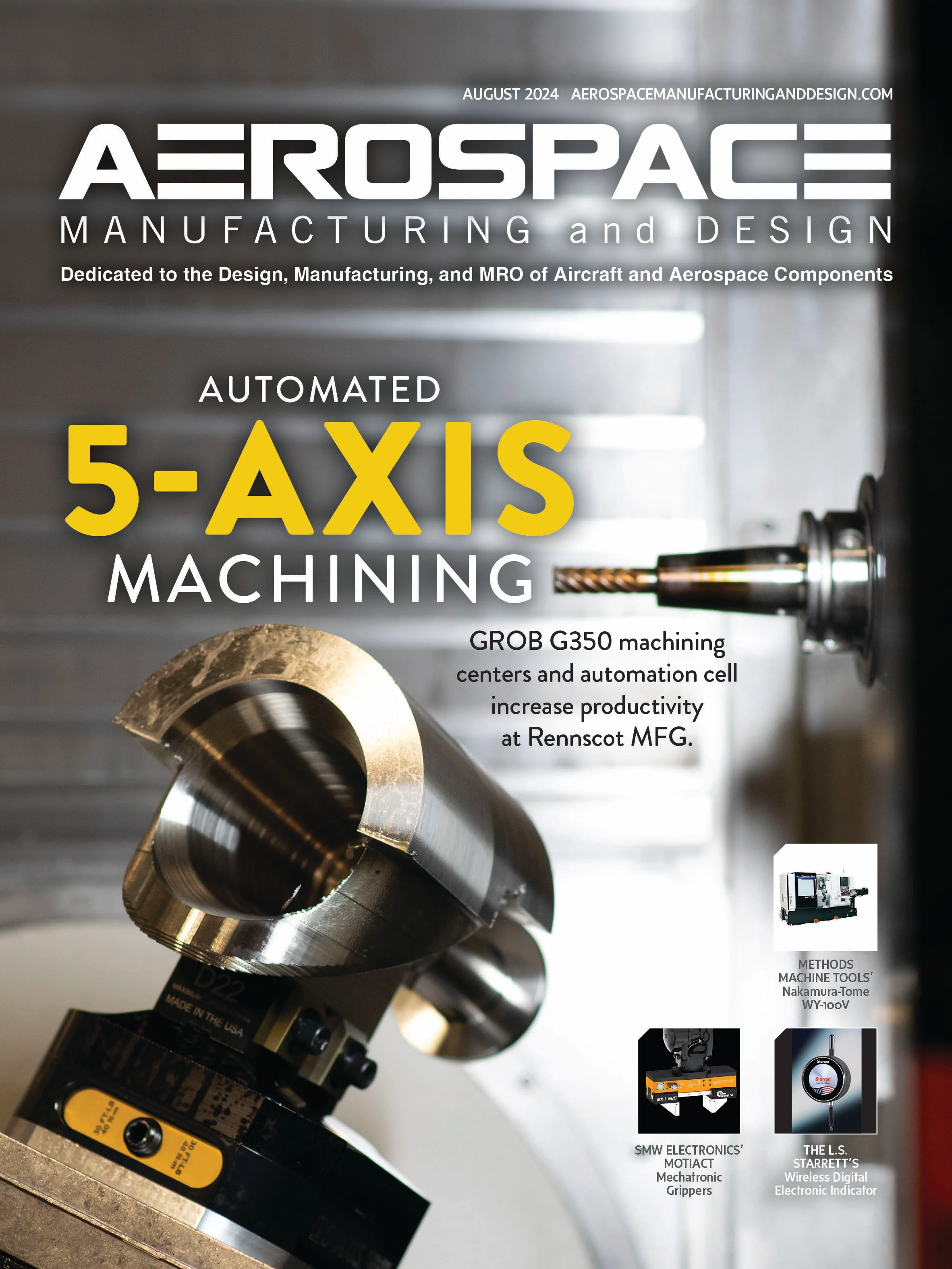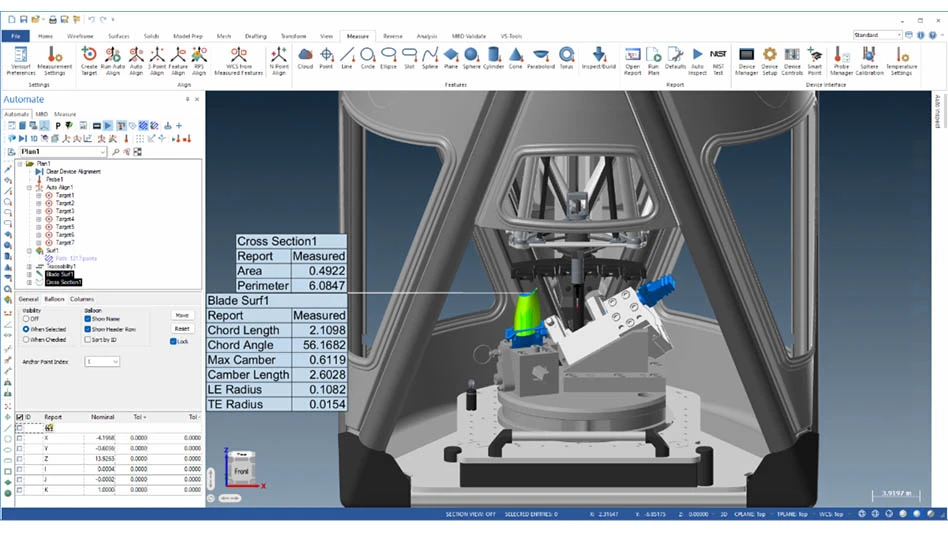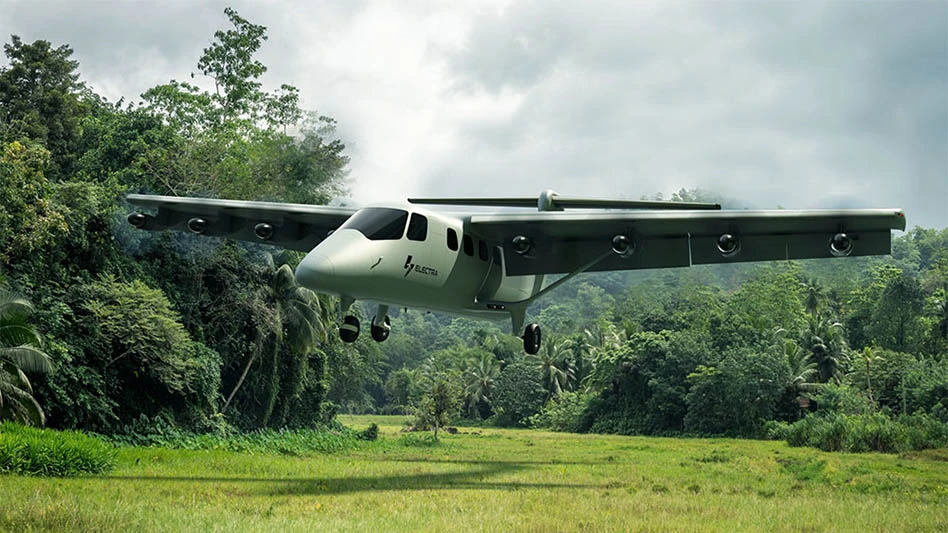
Compared to many other industries, enterprise-wide artificial intelligence (AI) adoption in the aerospace industry has been slow. Because of its risk-averse nature, the aerospace industry isn’t using AI to its fullest potential. According to a recent international survey from Altair surveying 2,037 professionals throughout the aerospace, automotive, banking, financial services, and insurance (BFSI), consumer electronics, heavy/industrial equipment, and technology sectors, the aerospace sector was the least likely to call itself a “leader” in its approach to using AI and data to propel digital transformation. Moreover, it was also the most likely industry to say “We’re behind the curve and need to catch up to our competitors” regarding enterprise AI and data use. Lastly, the aerospace industry was by far the least likely industry to say it’d start to implement AI for large-scale projects within the next 12 months.
This is concerning, especially since data from Accenture found “more than 80% of aerospace and defense executives fear substantial cost escalations alongside losing significant market share if they fail to overcome organizational challenges for digital reinvention.” Aerospace executives know the industry needs to pick up the pace. Competition is increasing, deadlines are shortening, backlog is increasing, and pressure to adopt the latest technology is more intense than ever for organizations large and small. After all, competition in the aerospace industry is also stemming from advancements other industries have made, such as the automotive industry. In short, the world is changing – to keep up, the aerospace industry needs to get on board with the global AI transformation. The following four areas are prime examples of where aerospace organizations can start using AI to kickstart their digital transformation.
1. Predicting failure or production scrap
Manufacturing organizations generate twice as much data compared to any other industry. But the biggest challenge is most organizations don’t know how to make sense of that much data. In fact, most aerospace organizations struggle to get data out of equipment in the first place. This hasn’t been as much of a problem in traditional manufacturing because other industries are low-mix high-volume (LMHV), allowing them to modernize equipment more often and take additional risks. But aerospace manufacturing isn’t like traditional manufacturing. Aerospace manufacturing is often high-mix low-volume (HMLV), which means there are a lot of human-in-the-loop processes and decisions at every step of production. However, this doesn't mean key performance indicators (KPIs) such as overall equipment effectiveness (OEE) and first pass yield (FPY) aren’t just as important. They just take more creative approaches to access the data and visualize plant operations effectively. Above all, aircraft are made of hundreds of thousands of parts – and for big, cutting-edge aircraft, this can extend into the millions.
With so many individual pieces of equipment, from computer numerical controls (CNCs) to autoclaves, collecting data to build impactful data science models is very challenging. How can AI identify the most common defects of a sub-assembly made by human hands? Or make sure all the parts on the bill of materials (BOM) are up to date and kitted correctly?
To start, you must have software tools combining simulation – of products, materials, and processes – with data analytics and high-performance computing (HPC). These tools predict the result of a production process after a part is designed. By collecting the data from a sensorized machine, you can compare the item produced with the one predicted by simulation, consider the errors induced by the production process and the tolerances of the project, and based on that identify any exceeding variance and its cause and make decisions about keeping, reworking, or scrapping a given part.

2. Root cause analysis
Predictive maintenance is the first step to using machine learning in production, but the real value often comes from root cause analysis (RCA). AI-driven simulation and data tools help detect design defects, raw material problems, build issues, and quality control shortfalls as early as possible. You can foster continuous product improvement and increase performance and reliability, and help companies maintain a strong reputation.
AI-driven RCA allows engineering and data teams to determine the likely causes of failure in testing, quality inspections, design anomalies, and more. AI is especially valuable in RCA because RCA often requires extensive analysis on machines’ working parameters, material characteristics, environmental factors, and many other variables. This is even more difficult because failures are often caused by several concurrent factors, meaning you need to understand how they influence each other and lead to defects. AI is helpful because it tackles this complexity with speed and ease, finding correlations that can be hard or impossible for people to identify on their own.
Next-generation AI-powered RCA works by allowing users to specify a target metric (non-conformances), and a list of potential predictors (root causes) thought to influence the target metric. Machine learning-powered software can correlate the production data with the non-conformances and identify all the symptoms that, when observed, predict a non-conformance. Going one step further, it’s even possible for the software to suggest optimal operational parameters to prevent and reduce the identified problems.
3. Text analysis for regulatory compliance
One of the most easily recognizable AI applications – and one of the easiest and most interesting for the aerospace industry – is text analysis. By analyzing textual data from technical documents, reports, and manuals, manufacturers can identify potential errors, discrepancies, or inconsistencies possibly causing defects or safety issues.
AI-powered text analysis enables companies to monitor and interpret regulatory changes and updates, ensuring compliance with evolving requirements. It also complements numerical data analysis by extracting actionable insights from unstructured textual data, enabling manufacturers to make more informed decisions related to production processes, design changes, and resource allocation.
Text analysis is also a fast, straightforward, and effective way to dig into maintenance reports, even those in PDF formats. It speeds time to resolution in machines, improves designs, and helps teams manage component risk.
4. Risk mitigation with digital twins
The main reason the aerospace industry is lagging other industries in enterprise AI adoption is because there’s so much risk involved that aerospace organizations must mitigate. Data access is a problem when dealing with old equipment and a lack of sensors which hinder enterprise-wide AI adoption. The aerospace industry has been slower to upgrade because the production quantity is low, and many processes are manual. Now producing at speed is becoming a key issue for many companies.
Digital twins are coming into play. A digital twin is not just a static representation of a system, it’s a living model, a dynamic and interconnected representation that mirrors its real-world counterpart in real time. It provides a holistic, interactive understanding of complex systems. Physics-based simulation applied to an asset’s digital representation gives it the power to predict the behavior of the physical one, and thanks to the continuous feeding of information into the system, these predictions become more accurate with time.

Also, simulation can produce synthetic data to feed the model, which is very useful when the asset is a new one or users want to understand possible behavior in risky or unusual conditions. This iterative process can also continually optimize the system, leading to improved design, operational parameters, processes, and procedures. If we add machine learning capabilities to this system, the digital twin can suggest how to change operating conditions or design parameters to reach goals and minimize risk.
For example, the twin can suggest a reduction in the production rate to avoid a breakdown that, based on prior data trends, may happen in a few hours. This gives teams time to prepare maintenance, order spare parts, and avoid costly unplanned downtime. All this reduces risk throughout the product life cycle and saves time, money, and unnecessary headaches.
Conclusion
AI, data analytics, and machine learning are incredibly powerful, and we’re only at the beginning of a long journey to fully discover and realize their potential. Today’s pace of innovation requires us to speed up technology adoption in all industries, and we must find ways to do that without sacrificing safety. The convergence of simulation, HPC, digital twins, AI, and data analytics is truly unlocking new dimensions of understanding and control, helping us to shape the future of aviation.
Altair
Explore the August 2024 Issue
Check out more from this issue and find your next story to read.
Latest from Aerospace Manufacturing and Design
- Simplify your shop floor operations while ensuring quality parts
- Happy Independence Day - July 4th
- Bombardier receives firm order for 50 Challenger, Global jets
- Automatic miter bandsaw
- SAS orders 45 Embraer E2 jets with options for 10 more
- Height measuring instrument
- Shopfloor Connectivity Roundtable with Renishaw & SMW Autoblok
- Moog expands space actuation, avionics manufacturing





